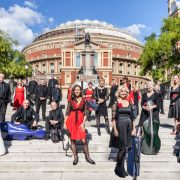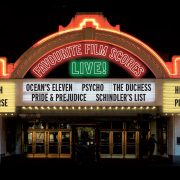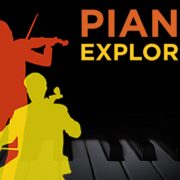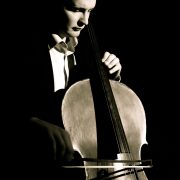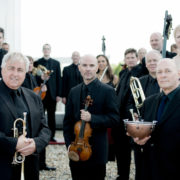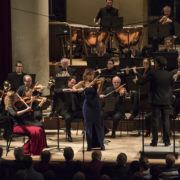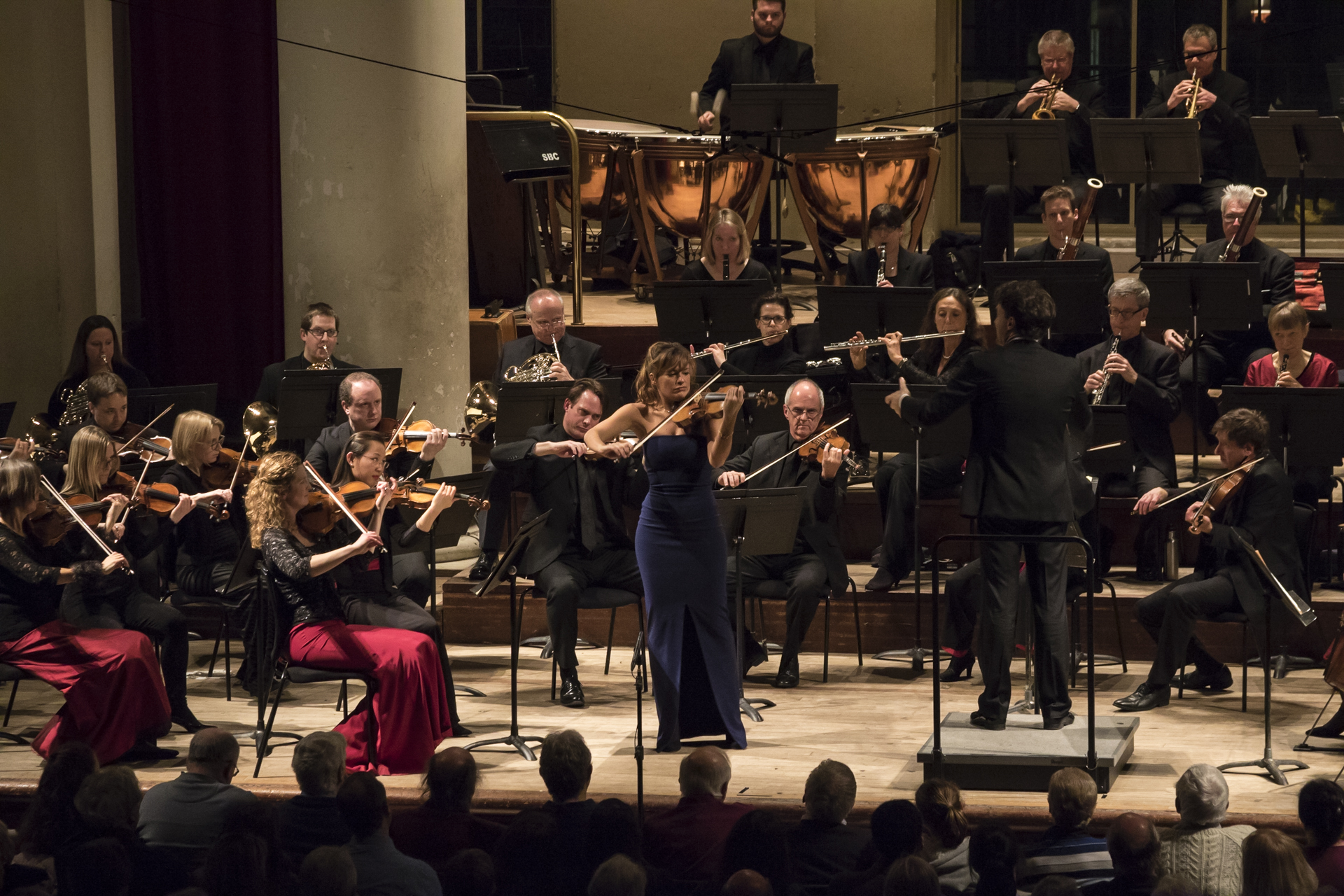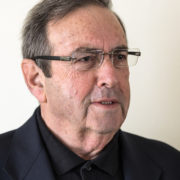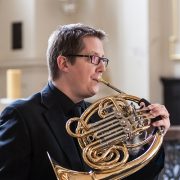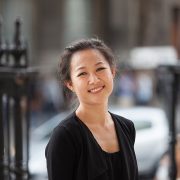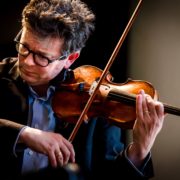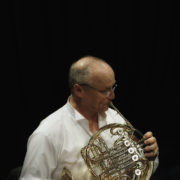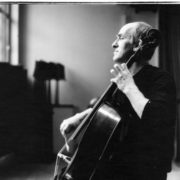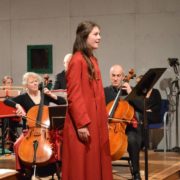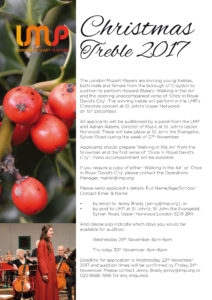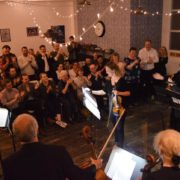Orchestral manoeuvres in Matthews Yard
The launch night of #LMPOnTheMove at Matthews Yard once again embodied this vision of taking the power of classical music into the community to uplift, inspire and engage new audiences. The main space of Matthews Yard had been cleared to accommodate a chamber version of the orchestra, and the audience paid just £8.00 each to reserve a seat, receive a free beer and/or give a donation. This was classical music set right in the middle of Friday night in Croydon, with the hum of conversation and the deep fat fryer of BRGR&Beer hissing away in the background. As the shadows of their bows flickered across the stripped-back walls in a dynamic dance of musical light and shade, this was clearly Matthews Yard as we’d never quite seen or heard it before.One of the unexpected and wonderful outcomes of the closure of Fairfield Halls is the relocation of the London Mozart Players (LMP) to St John the Evangelist church, Upper Norwood. The longest-established chamber orchestra in the UK, formed in 1949 by conductor Harry Blech, LMP has been resident at Fairfield Halls since 1989. Executive director Julia Desbruslais described the move to St John the Evangelist as “a pivotal point in the long history of LMP”, making it ‘the first orchestra in this country to embed itself into the very heart of a living, breathing community’ with a vision “to build, connect and resonate with the people here”. Since the move in July 2016, LMP has done just that with a series of imaginative, interactive, inclusive concerts and projects with local schools, colleges, community choirs and intergenerational audiences.
It was absolutely fitting that the theme and title piece of the event was ‘Relationships’, as LMP launches a series of events which forge new relationships across the borough. The evening’s programme featured three pieces which each offered a unique reflection on relationships.

Photo by the London Mozart Players, used with permission.
Shostakovich’s Symphony for Chamber Orchestra was originally composed in only three days as String Quartet No 8. in 1960, when he had begun to experience symptoms of motor neurone disease and was contemplating suicide. In a letter to his friend Isaak Glickman, he wrote: “When I die, it’s hardly likely that someone will write a quartet dedicated to my memory. So I decided to write it to myself”. It was later intimated in his memoirs that the dedication in the score to ‘victims of fascism and the war’ was dictated by Soviet authorities and that the piece was really an epitaph. It opens with his musical signature, the DSCH motif, and references many of his other pieces and a Russian revolutionary song, ‘Tormented by Grievous Bondage’. The piece was transcribed for chamber orchestra by his friend, violist and conductor Rudolf Barshai.
We travelled the vast emotional landscapes of despair and destruction
LMP’s powerful rendering of this profound work took the listener into reflection on the deepest, darkest spaces of humanity. Artwork from students at Coulsdon College poignantly pointed to the relationship between the inner battles of the psyche and outward conflicts and war. With the mastery of expert voyagers, LMP guided us through the vast emotional landscapes of the individual and collective struggle with despair and destruction.
Hauntingly long notes were sustained against the furious thrumming of their bows, suggested the beating of a human being against the walls of their own pain and the walls of oppression. Music critic Erik Smith said that Shostokovich wept on hearing the “beautiful realisation of his most personal feelings” when the Borodin Quartet performed the piece to him at his Moscow home. I’m sure he would have been as moved as we were that night.
We felt the vibrant relevance of classical music in today’s world
Fiona Brice, composer of the evening’s title piece, reflected on the relationship between the composer and orchestra in her contemplative introduction to the evening’s programme. She described the role of the composer as transcribing emotions into a form which can then be expressed by the orchestra. The relationship between her and LMP was one of trust, she affirmed, before they embarked on the world premiere of her piece, ‘Relationships’, which was written after a relationship break-up. LMP adeptly articulated the full spectrum of feelings in the piece, from tender moments of loss to sudden upward surges of positivity.
As Fiona said, these feelings are not limited only to relationship break-up but to the human condition. An orchestrator for artists including Placebo, Sandy Dillon and Kate Nash and violinist who has performed with Kanye West, Beyonce and Jay-Z, her headlining of this programme demonstrates the LMP’s intention to underline the vibrant relevancy of classical music in today’s world.
The final piece of the evening drew us into yet another layer of relationships – that between composer and composer. Ástor Piazzolla’s The Four Seasons of Buenos Aires, based on Vivaldi’s Four Seasons, is an intoxicating dance between an Argentinian composer writing in 1969 and an Italian composer writing in 1721. Originally written for Piazzolla’s first Quinteto of violin, piano, electric guitar, double bass and bandoneon, the pieces were arranged for solo violin and strings by Leonid Desyatnikov. The fireworks of Piazolla’s Tango Nuevo caused real-life furore amongst classical musical traditionalists – fights broke out at performances of his works and he received death threats.
These players exploded the stiff, starchy stereotypes of the traditional orchestra
Fortunately, the audience at Matthews Yard was far more appreciative! We were drawn into a time travel tango where bursts of Vivaldi rang out amidst the fury, passion, heat and amore of Buenos Aires tango. LMP leader and soloist Ruth Rogers led us deftly through this vivacious, vibrant encounter with her flamboyant, expressive performance.
The dynamic relationship between LMP’s players is a compelling dance to witness. Their passion and commitment to playing right in the thick of things explodes the stiff, starchy stereotypical images of a classical orchestra. Julia Desbruslais’s affirmation that they “absolutely love playing together” is evident in every note. Their elaborate musical conversation bounces from bow to bow playfully, delicately, precisely, furiously. We were all on our feet cheering at the end of this magical performance which connected players, composers, listeners and the wider community in promising new relationships.
#LMPOntheMove now goes on creating new relationships across the borough at events including the sound track to Charlie Chaplin’s ‘The Gold Rush’ at RoofTop Cinema, (to be reviewed in the Citizen shortly) and an expansive future programme. For more information, click here.


